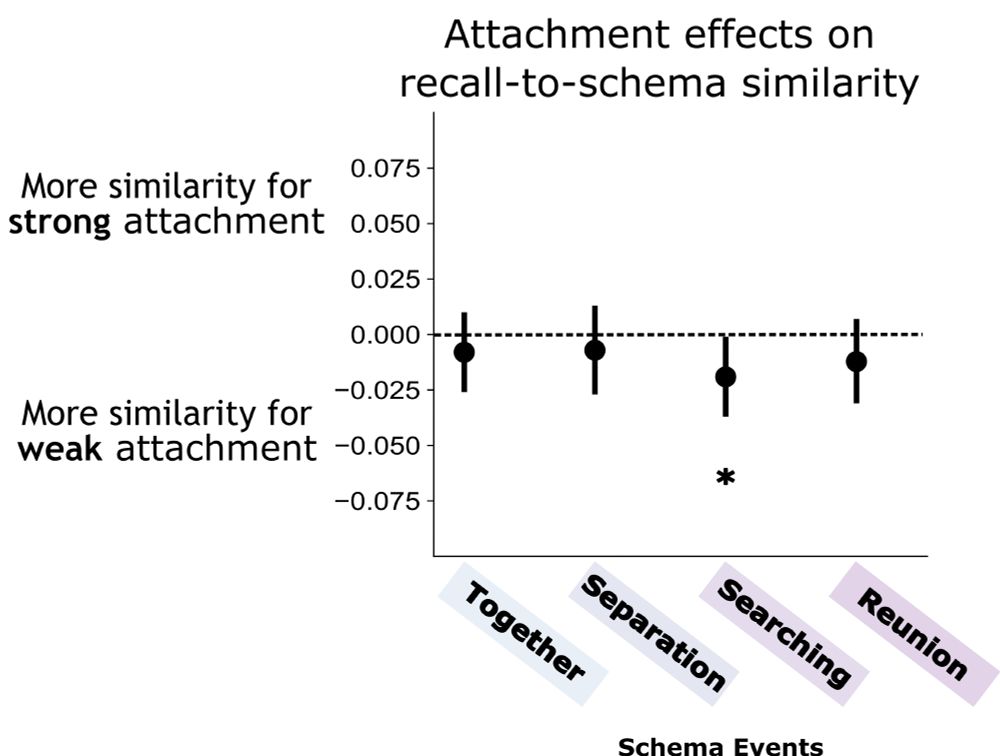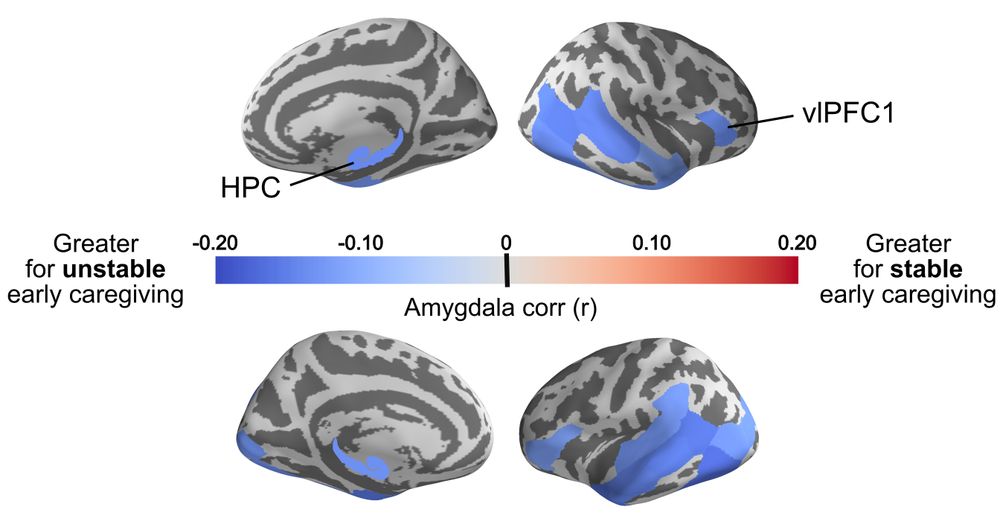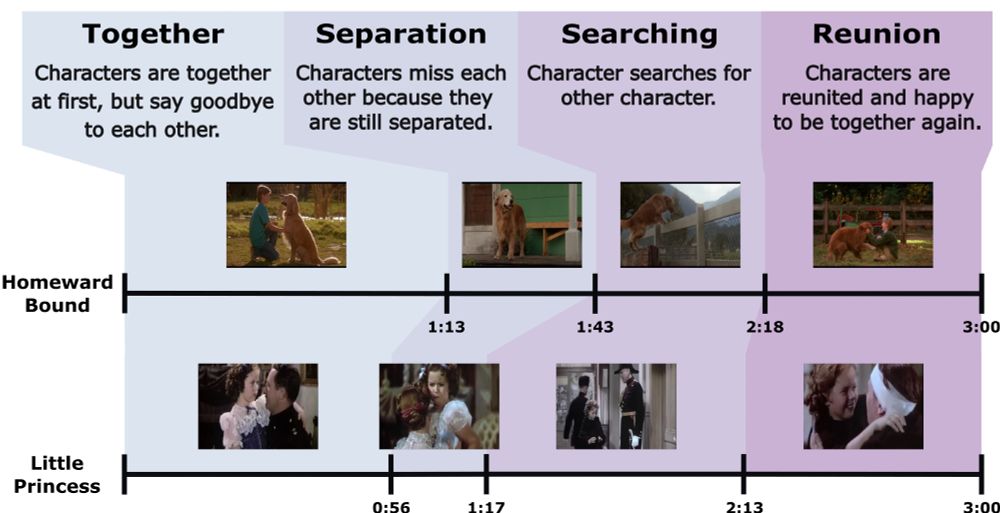
Chris Baldassano
@chrisbaldassano.bsky.social
Associate Professor in Psychology at Columbia, PI of https://www.dpmlab.org/
For more on this work, see:
Our paper in Current Biology www.cell.com/current-biol...
This feature in Quanta Magazine www.quantamagazine.org/how-event-sc...
Our paper in Current Biology www.cell.com/current-biol...
This feature in Quanta Magazine www.quantamagazine.org/how-event-sc...

Top-down attention shifts behavioral and neural event boundaries in narratives with overlapping event scripts
De Soares et al. find that priming participants to attend to a schematic event script
can change the way that a narrative stimulus is behaviorally and neurally segmented
into perceptual events.
www.cell.com
June 4, 2025 at 2:25 PM
For more on this work, see:
Our paper in Current Biology www.cell.com/current-biol...
This feature in Quanta Magazine www.quantamagazine.org/how-event-sc...
Our paper in Current Biology www.cell.com/current-biol...
This feature in Quanta Magazine www.quantamagazine.org/how-event-sc...
This work was a true team effort, led by Caroline Lee in my lab with former lab members Samantha Cohen and Sam Hutchinson, in collaboration with Nim Tottenham and her lab!
April 10, 2025 at 4:06 PM
This work was a true team effort, led by Caroline Lee in my lab with former lab members Samantha Cohen and Sam Hutchinson, in collaboration with Nim Tottenham and her lab!
On the contrary, kids who currently feel strong attachment to their caregivers may be processing these same narratives using a top-down approach where schema regions in the PFC are activated. There are even more results and cool methods in the paper, so check it out!
April 10, 2025 at 1:47 PM
On the contrary, kids who currently feel strong attachment to their caregivers may be processing these same narratives using a top-down approach where schema regions in the PFC are activated. There are even more results and cool methods in the paper, so check it out!
All in all, we think that kids with unstable caregiving histories may not have learned a stable (or what we would consider “standard”) attachment schema, so they’re activating episodic memory and visual processing regions when watching an attachment narrative.
April 10, 2025 at 1:47 PM
All in all, we think that kids with unstable caregiving histories may not have learned a stable (or what we would consider “standard”) attachment schema, so they’re activating episodic memory and visual processing regions when watching an attachment narrative.
We also looked at kids' verbal recalls of the movies! Interestingly, we found that recalls in kids who report weaker attachment are more focused on the Searching event in the attachment schema.

April 10, 2025 at 1:47 PM
We also looked at kids' verbal recalls of the movies! Interestingly, we found that recalls in kids who report weaker attachment are more focused on the Searching event in the attachment schema.
Looking at kids’ brain activity related to caregiver stability, we show that kids with unstable caregiver histories have more connectivity between the amygdala and visual processing regions + hippocampus.

April 10, 2025 at 1:47 PM
Looking at kids’ brain activity related to caregiver stability, we show that kids with unstable caregiver histories have more connectivity between the amygdala and visual processing regions + hippocampus.
Our results show that there are indeed differences in brain responses! Kids who report stronger attachment to their current caregiver(s) have more connectivity between the amygdala and vmPFC. Whole-brain results show that heightened amygdala connectivity also shows up in lateral frontal regions.

April 10, 2025 at 1:47 PM
Our results show that there are indeed differences in brain responses! Kids who report stronger attachment to their current caregiver(s) have more connectivity between the amygdala and vmPFC. Whole-brain results show that heightened amygdala connectivity also shows up in lateral frontal regions.
We compared brain responses to the movies based on childhood experiences: caregiver stability (caregiver switch/es vs no switch) and caregiver attachment (weak vs strong). We examined response patterns in the amygdala to other regions in the brain with ISFC (Inter-Subject Functional Connectivity).

April 10, 2025 at 1:47 PM
We compared brain responses to the movies based on childhood experiences: caregiver stability (caregiver switch/es vs no switch) and caregiver attachment (weak vs strong). We examined response patterns in the amygdala to other regions in the brain with ISFC (Inter-Subject Functional Connectivity).
To understand whether childhood experiences such as changing caregivers (in the past) and attachment security (in the present) impact how kids view attachment narratives in movies, we had kids watch a short movie edited to depict 4 crucial events of an attachment schema while collecting fMRI.

April 10, 2025 at 1:47 PM
To understand whether childhood experiences such as changing caregivers (in the past) and attachment security (in the present) impact how kids view attachment narratives in movies, we had kids watch a short movie edited to depict 4 crucial events of an attachment schema while collecting fMRI.

